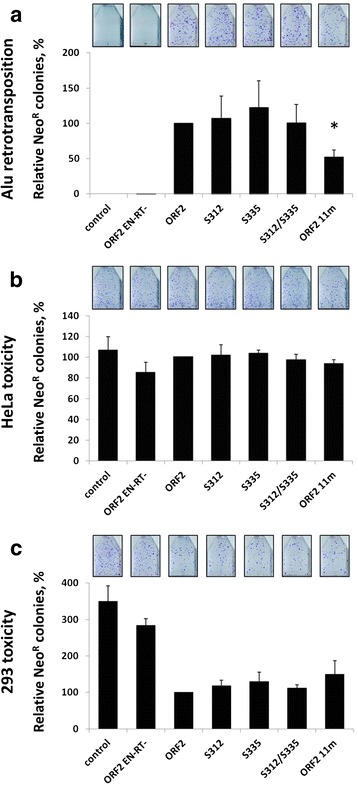Fig. 8.

Analysis of select putative phosphorylation sites outside of the endonuclease domain. a Alu retrotransposition: ORF2 proteins containing mutations in the indicated putative phosphorylation sites were used to drive Alu retrotransposition in HeLa cells, as previously described [3]. ORF2 is the functional protein and ORF2 EN-RT- is a non-functional protein containing mutations in the endonuclease (D205A) and reverse transcriptase (D702A) domains. Control indicates cells transfected with an empty vector and the Alu retrotransposition reporter plasmid. The graph depicts the relative number of Alu retrotransposition events as represented by NeoR colonies (Y-axis). Asterisks indicate a statistically significant difference in Alu retrotransposition compared to ORF2 (t-test, P ≤ 0.05). b Acute toxicity: HeLa cells were cotransfected with a NeoR expression vector and the indicated ORF2 putative phosphorylation mutant plasmid. c Acute toxicity: 293 cells were cotransfected with a NeoR expression vector and the indicated ORF2 putative phosphorylation mutant plasmid. In both panels b and c, ORF2 is the functional protein and ORF2 EN-RT- is a non-functional protein containing mutations in the endonuclease (D205A) and reverse transcriptase (D702A) domains. Control indicates cells transfected with an empty vector and the NeoR expression vector. Colony formation was assayed after 2 weeks under G418 selection (Y-axis) and used as a measure of toxicity as previously described [26, 43]
